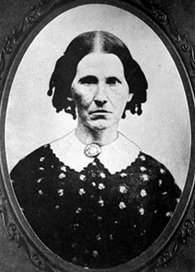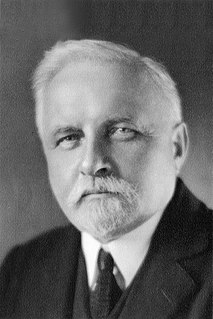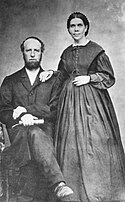
Southern Adventist University is a private Seventh-day Adventist university in Collegedale, Tennessee. It is owned and operated by the Southern Union Conference of Seventh-day Adventists. It was founded in 1892 in Graysville, Tennessee, as Graysville Academy and was the first Adventist school in the southern U.S. Due to the need for additional space for expansion the school relocated in 1916 and was renamed Southern Junior College. In 1944, Southern began awarding baccalaureate degrees and was renamed Southern Missionary College. In 1996 the institution started conferring master's degrees and adopted its current name.

The Antillean Adventist University (AAU) (UAA) is a private, Seventh-day Adventist university in Mayagüez, Puerto Rico. It is a part of the Seventh-day Adventist education system, the world's second largest Christian school system. The university developed from the merging of two educational institutions: Puerto Rico Academy established in 1946; renamed in 1957 as the Colegio Adventista Puertorriqueño, and Antillian College which moved to Puerto Rico as a result of the Cuban Revolution. In 1989, the school's higher education program was accredited by the Council of Higher Education of Puerto Rico on August 18, 1989.
Joseph Booth was an English missionary working in British Central Africa and South Africa. In his 30s, Booth abandoned his career as a businessman and, for the rest of his life, he undertook missionary work for several Christian denominations including Baptist, Seventh Day Baptist and Seventh-day Adventist churches, and he was appointed a missionary by the Watch Tower Bible and Tract Society of Pennsylvania. Throughout his successive ministries, his defining beliefs were a radical egalitarianism, including a scheme of "Africa for the Africans"’ and, from 1898, Seventh-Day Sabbath (Sabbatarian) observance.

Andrews University is a private Seventh-day Adventist university in Berrien Springs, Michigan. Founded in 1874 as Battle Creek College, it was the first higher education facility started by Seventh-day Adventists and is the flagship university of the Seventh-day Adventist school system, the world's second largest Christian school system.

The Seventh-day Adventist Church had its roots in the Millerite movement of the 1830s to the 1840s, during the period of the Second Great Awakening, and was officially founded in 1863. Prominent figures in the early church included Hiram Edson, Ellen G. White, her husband James Springer White, Joseph Bates, and J. N. Andrews. Over the ensuing decades the church expanded from its original base in New England to become an international organization. Significant developments such the reviews initiated by evangelicals Donald Barnhouse and Walter Martin, in the 20th century led to its recognition as a Christian denomination.

Rachel (Harris) Oakes Preston was a Seventh Day Baptist who persuaded a group of Adventist Millerites to accept Saturday, instead of Sunday, as Sabbath. This Sabbatarian group organised as the Seventh-day Adventist Church in 1863.

Spicer Adventist University is a Seventh-day Adventist institution of higher learning in Aundh, Pune, India. It is considered the church's flagship provider of higher education in India. It is a part of the Seventh-day Adventist education system, the world's second largest Christian school system.
The South Pacific Division (SPD) of Seventh-day Adventists is a sub-entity of the General Conference of Seventh-day Adventists, which oversees the Church's work in the South Pacific nations of Australia, New Zealand, Papua New Guinea and the islands of the South Pacific. Its headquarters is in Wahroonga, Sydney, Australia.

The Ellen G. White Estate, Incorporated, or simply the (Ellen) White Estate, is an organization created in 1933 by the five trustees named in Ellen G. White's last will and testament to act as the custodian of her writings, which Seventh-day Adventists consider as divinely inspired. The headquarters is located at the General Conference in Silver Spring, Maryland, where it functions as a quasi-independent department of the denomination. It has an independent and self-perpetuating board, but the organization receives an annual allocation just like other departments of the world headquarters. The White Estate has branch offices and research centers at Adventist universities and colleges around the world with at least one center in each division of the world church.

Arthur Grosvenor Daniells was a Seventh-day Adventist minister and administrator, most notably the longest serving president of the General Conference. He began to work for the church in Texas in 1878 with Robert M. Kilgore and also served as secretary to James and Ellen White for one year, and later worked as an evangelist. In 1886, he was called to New Zealand, and was one of the pioneers of the Seventh-day Adventist Church in the South Pacific. Daniells had astounding success through his dynamic preaching and on October 15, 1887, he opened the first Seventh-day Adventist church in New Zealand at Ponsonby. While there he served as president of the New Zealand Conference , and of the Australia Conference. Later, he became the president of the Australasia Union Conference before becoming president of the General Conference in 1901 and served as president until 1922.

William Clarence "Willie" White was a son of Ellen G. White and James Springer White, two of the founders of the Seventh-day Adventist Church. He became a well known Seventh-day Adventist minister and church leader. W.C.'s son Arthur L. White worked closely with him and succeeded his father as Secretary of the White Estate.

John Luis Shaw (1870–1952) was a Seventh-day Adventist missionary, educator, and treasurer. He graduated from the scientific course at Battle Creek College in 1893 and became dean of men at Union College. In 1897 he became principal of Claremont Union College in South Africa. In 1901 he was ordained and sent to India, where he oversaw the establishment of the Watchman Press in 1903 and was in charge of the field from 1901 to 1912. He returned to the United States because of poor health in 1912 and was appointed principal of the Washington Foreign Mission Seminary. From 1913 to 1915 he was secretary of the General Conference Department of Education. From 1922 to 1936 he was treasurer of the General Conference. During his retirement he served for a time as board chair of Loma Linda University.

William Ambrose Spicer was a Seventh-day Adventist minister and president of the General Conference of Seventh-day Adventists. He was born December 19, 1865 in Freeborn, Minnesota in the United States in a Seventh-day Baptist home. Spicer worked for the church in the United States, England and India, where Spicer College is named after him. He served as Secretary of the General Conference during the presidency of A. G. Daniells and Daniells served as the Secretary during Spicer's years as president. The two men led the Adventist Church for the first 30 years of the 20th century.

Robert Howard Pierson was a president of the General Conference of Seventh-day Adventists during the 12 1/2-year period June 16, 1966 to January 3, 1979. While in the line of duty, Pierson served in North America, Asia and Africa. He interacted with 3 U.S. Presidents and the Presidents or Prime Ministers of 8 foreign countries, plus many governors, mayors, and other governmental dignitaries. He received an Honorary Doctor of Divinity degree from Andrews University, Berrien Springs, Michigan in the United States. As of 2018, Pierson is the third-longest serving, church president after A. G. Daniels, and James Lamar McElhany.

Edward Earl Cleveland commonly known as E. E. Cleveland was an author, civil rights advocate and evangelist of the Seventh-day Adventist Church.

John T. Walsh was a minister and Millerite who after the Great Disappointment, led a group of Adventist Millerites. They believed that Christ had returned on October 22, 1844, only invisibly, and that the Millennium had begun on that date. This group organized as the Life and Advent Union in 1863, which later became part of the Advent Christian Church.
Shwenyaungbin, also Shwe-nyaung-bin or Schwenyaungbiri, is a large village in Mogok Township, Pyin Oo Lwin District, in the Mandalay Region of central Burma. It is located west of Mogok. It lies at a meander on the Kin River and the National Highway 31, which connects it to Kyatpyin and Mogok in the east.

The Seventh-day Adventist Church in Canada (SDACC) is organized as a constituent entity of the North American Division of Seventh-day Adventists (SDA).















